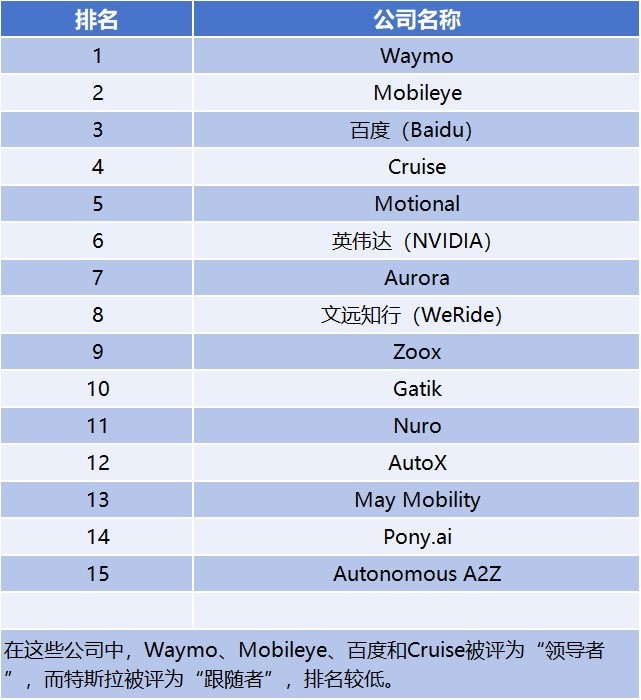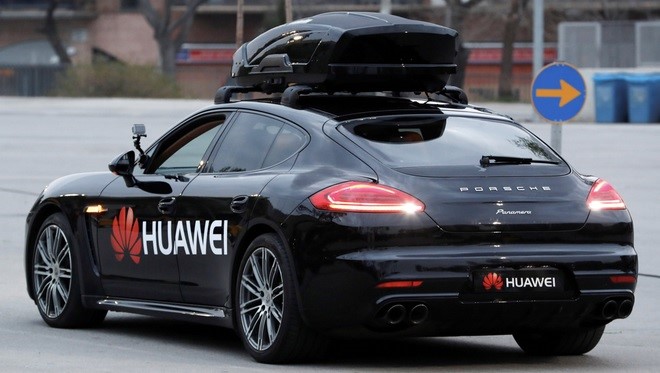Google CEO Sundar Pichai has publicly stated that Tesla and Waymo are the top two in the field of autonomous driving, and this evaluation undoubtedly provides a strong endorsement for the status and achievements of these two companies in the industry. As a pioneer in the field of electric vehicles and autonomous driving, Tesla has indeed occupied a leading position in the industry with its extensive market influence and technological breakthroughs; As a subsidiary of Google's parent company Alphabet, Waymo has also accumulated a deep foundation in autonomous driving technology. However, Pichai's assessment is not shared by all industry insiders. In fact, there are very different voices in the industry, especially with some technologists and competitors questioning this single criterion. They believe that although Tesla and Waymo excel in some aspects, their limitations in the diversity and innovation of technology have also allowed many companies to have greater breakthroughs and opportunities in the competition for autonomous driving technology.
Google CEO Pichai's view: Tesla and Waymo are leading the way in self-driving technology
Pichai rated Tesla and Waymo as the top two in the field of autonomous driving, with a solid technical foundation and market performance behind them. Since the launch of the FSD (Full Self-Driving) function, Tesla has rapidly led the development of global autonomous driving technology through continuous technology updates and data accumulation. Tesla CEO Elon Musk has said that Tesla's FSD system will eventually achieve full self-driving, and the company is promoting this goal through continuous iteration and updating. Tesla's powerful technological progress is due to its wide user base and accumulated large data volume, which allows its AI algorithms to better adapt to different driving scenarios through continuous learning and optimization.
On the other hand, Waymo, as a subsidiary of Google's parent company Alphabet, is also at the forefront of autonomous driving. Since announcing the launch of its robotaxi service in 2017, Waymo has been testing and operating in multiple cities across the U.S., gradually building its own fleet of autonomous vehicles. Waymo's autonomous driving technology relies heavily on lidar and computer vision technology to make real-time decisions through a precise combination of maps and sensors. Waymo's autonomous vehicle fleet is already commercially available in specific regions, and its expanding service network has given it a significant position in the industry.
From Pichai's point of view, Tesla's leading position with Waymo is no accident, and their technological innovation and market layout have made them industry leaders. However, as discussed next, this view is not accepted by all industry insiders, especially when it comes to the rise of other technology giants such as Huawei in the field of autonomous driving.
Diverse voices in the industry: diversity and competition in autonomous driving technology
Voices in the industry are not consistent in their assessment of Pichai. Many experts and practitioners believe that while Tesla and Waymo excel in certain technical areas, they still have certain limitations in terms of comprehensiveness and maturity of autonomous driving technology. Moreover, the future of autonomous driving technology is not dominated by a single technical route, on the contrary, the differences in technical strategies, market positioning, and cooperation models of different companies determine the diversity and competitive situation of the autonomous driving industry.
For example, a report by Guidehouse Insights notes that among the 15 companies in the world that develop self-driving systems, while Waymo leads the way, Tesla's technology is not considered the most advanced. Tesla still relies on its vision system and machine learning algorithms for autonomous driving, but this camera-based and visual recognition solution cannot adequately cope with extreme driving environments such as rain and snow. In contrast, some competitors, such as Baidu, Aurora and Cruise, have opted for a combination of multi-sensor technologies, which are considered to be better suited to complex driving scenarios.
At the same time, although Tesla continues to invest in hardware, such as carrying self-developed AI chips, its technical system is still relatively simple. In contrast, more companies have proposed more diversified technical routes, and this diversified technical thinking has also received more and more attention in the industry.

Figure: 15 companies in the world that develop autonomous driving systems according to the Guidehouse Insights report (compiled by China Exportsemi)
In addition, although Huawei's intelligent driving system is not "far ahead" in the above discussion, in fact, its technology and achievements in autonomous driving cannot be ignored. Let's talk about it in detail.
Huawei: Breakthrough and competitiveness of intelligent driving systems
As the world's leading communications technology company, Huawei's deployment in the field of autonomous driving has also attracted wide attention in the industry. Huawei does not rely on vision solutions like Tesla, but adopts a multi-sensor fusion route of lidar + millimeter-wave radar + camera. This route is considered to be better able to cope with complex environments, such as rain, snow, haze and other specific scenarios, lidar and millimeter-wave radar have obvious advantages, which can effectively improve the reliability and safety of the system.
Huawei's intelligent driving system is not just in the technology research and development stage, in fact, it has made remarkable progress in many fields. Huawei's autonomous driving technology has already achieved certain results in the Chinese market, and its cooperation with several Chinese automakers demonstrates the maturity and market potential of its technology. For example, Huawei's cooperation with Changan Automobile and Guangzhou Automobile Group has made breakthroughs in L3 and L4 autonomous driving technologies, respectively. Huawei's autonomous driving technology optimizes the driving experience through deep learning and simulation technologies, especially in intelligent decision-making and driving smoothness.
In addition, Huawei's intelligent driving system is not only limited to the optimization of hardware and algorithms, but also fully considers the system architecture and the design of cloud services. Huawei's Connected Vehicles (HiCar) platform deeply integrates vehicles with mobile devices and cloud computing services to improve driving intelligence and safety. This platform has also been widely used in the Chinese market, further demonstrating Huawei's technological innovation capabilities in the field of intelligent driving.

Figure: Huawei's achievements in autonomous driving technology cannot be ignored
Why Huawei's intelligent driving system is considered a better choice
The industry's high praise for Huawei's intelligent driving system mainly comes from the following advantages:
Multi-sensor fusion technology: Huawei's combination of LiDAR, millimeter-wave radar, and cameras can greatly enhance the adaptability of the autonomous driving system to complex scenarios. Tesla's vision solution, while excellent in some cases, may have limitations in inclement weather and low-light environments.
Driving experience: Huawei has continuously optimized the algorithms of its intelligent driving system to improve the smoothness and safety of the driving experience. Huawei's autonomous driving system can predict road conditions more accurately and make smarter decisions, especially in congested roads and complex traffic conditions.
Commercialization process and cooperation: Huawei's cooperation with several automakers has enabled its technology to not only stay in the laboratory stage, but also be validated through the commercialization process. In the future, Huawei will launch L4 intelligent driving vehicles in 2024 to further accelerate market layout.
Conclusion: The diversified competitive landscape of the industry
While Google CEO Pichai believes that Tesla and Waymo are the top two in the field of autonomous driving, there are different opinions in the industry on this view. Tesla and Waymo do have significant technological advantages, but the diversity and complexity of autonomous driving technology requires us to analyze it from different angles. The multi-sensor fusion technology proposed by Huawei and other companies not only has unique advantages in technology, but also injects new vitality into the development of the autonomous driving industry.
In the future, the autonomous driving industry will continue to present a diversified competitive landscape, and the technical routes, market strategies and cooperation models of different companies will jointly promote the progress of the industry. Competition between technology giants such as Tesla, Waymo, and Huawei will bring a safer and smarter driving experience to the global automotive industry.






